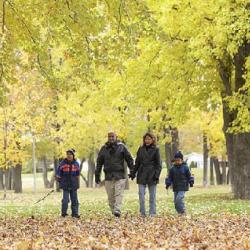Source Institutions
Source Institutions
Add to list Go to activity

An outdoor scavenger hunt helps learners consider the theme of "What Is Life?" Learners explore what living organisms are, including how organisms meet basic needs of food, shelter and water to survive, how organisms follow the life cycle of birth, growth and death, and how organisms differ from nonliving structures. The scavenger hunt can be conducted in a schoolyard or park. When the hunt is over, learners discuss their findings, particularly what was difficult or easy to find and why. This activity can be found on pages 14-15 of the activity guide. [Activity is publicly available through a web crawler capture on Archive.org.]
- 30 to 45 minutes
- 45 to 60 minutes
- $1 - $5 per student
- Ages 6 - 14
- Activity, Field Trip
- English
Quick Guide
Materials List (per student)
- Worksheet – Living or Non–Living?
- Worksheet – Scavenger Hunt
- Clipboards
- pencils
- Resealable plastic bags
- roll of masking tape
- wristwatch or stop watch
Subjects
-
Life Sciences
-
Diversity of Life
- Plants
- Animals
-
Ecology
- Ecosystems
-
Diversity of Life
-
The Nature of Science
-
The Scientific Process
- Gathering Data
- Formulating Explanations
- Communicating Results
-
The Scientific Process
Informal Categories
- Animals
- Nature and Environment
- Outdoor Activity
- Physical Activity
Audience
To use this activity, learners need to:
- see
- be mobile
Learning styles supported:
- Involves teamwork and communication skills
- Involves hands-on or lab activities
Other
Access Rights:
- Free access
By:
Source Collection
- Science After School Consumer's Guide
Rights:
- All rights reserved, TERC, 2007
Funding Sources:
- NASA, NAS5-26555
- National Science Foundation, NSF 9730728
